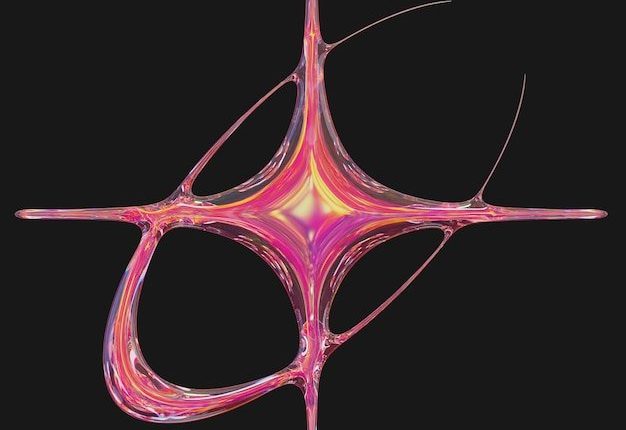The recent study titled “Safety and Effectiveness of Portal Vein Embolization after Hepatic Arterial Infusion Therapy” sheds critical light on the outcomes of portal vein embolization post-HAI, a procedure that plays a pivotal role in the management of patients with advanced hepatic malignancies. As surgical resection remains a mainstay of curative intent treatment for liver cancer, enhancing the safety and efficacy of pre-surgical interventions is critically important for improving patient outcomes. Portal vein embolization (PVE) is employed to induce hypertrophy of the future liver remnant (FLR), thereby minimizing the risk of liver failure after extensive liver resections.
This research, carried out by Ningcheng Li, Issac R Schwantes, Skye C Mayo, Brian Park, and Yilun Koethe, focuses on a retrospective analysis of nine patients who underwent PVE subsequent to hepatic arterial infusion (HAI) therapy from January 2015 to December 2022. This study is one of the few that explores the feasibility of conducting PVE in patients who have previously received HAI, a specialized treatment used to deliver chemotherapy directly to the liver to combat hepatic tumors more effectively.
The findings are crucial as they provide insights into the safety profile of PVE post-HAI, noting that there were no major adverse events such as biliary injury or high-grade liver failure reported in the cohort. This study is particularly significant in the context of patient care, as it supports the hypothesis that the inclusion of HAI in preoperative regimens should not disqualify patients from undergoing PVE. Moreover, the result showing a notable increase in the standardized FLR, from an average of 21.1% before PVE to 34.8% post-PVE, underscores the potential for PVE to safely expedite liver regeneration.
This research enriches the existing medical literature on the intervention strategies for liver cancer and offers a promising outlook for optimizing preoperative care. The authors carefully analyze the kinetic growth rates and the implications for patient management, providing a comprehensive view that could guide clinical decisions in treating hepatic malignancies where both PVE and HAI are considered.
Portal vein embolization (PVE) is a critical preoperative intervention used primarily among patients who are candidates for major hepatic resection, often due to hepatobiliary malignancies, such as hepatocellular carcinoma or metastatic colorectal cancer. This procedure is instrumental when the future liver remnant (FLR) is insufficient to support liver function post-resection, presenting a significant challenge in hepatic surgery. By embolizing the portal vein branches that feed the part of the liver destined for resection, PVE induces hypertrophy in the FLR, thus increasing its volume and functional capacity before surgery. This hypertrophic response enhances the patient’s ability to tolerate extensive liver surgery by reducing the risks associated with postoperative liver failure.
The necessity of Portal Vein Embolization Post-HAI (Hepatic Artery Infusion) becomes evident in the context of advanced hepatic malignancies where regional therapies and systemic therapies have been inadequate. Hepatic Artery Infusion (HAI) is a technique used to deliver chemotherapeutic agents directly to the liver. This method allows for high local concentrations of chemotherapy with reduced systemic toxicity, targeting liver tumors more effectively than systemic chemotherapy. However, the requirement for resection may still arise when there is insufficient response to HAI, or when a significant portion of the liver tumor remains viable.
The synergistic use of PVE following HAI therapy takes on special significance due to alterations in the hepatic parenchyma that can result from prolonged exposure to chemotherapeutic agents. Chemotherapy associated liver injuries, such as sinusoidal obstruction syndrome or chemotherapy-associated steatohepatitis, may impair liver regeneration. This complicates the risk assessment for hepatic resection, making PVE an even more crucial preparatory step to ensure an adequate FLR.
Studies and clinical trials have been dedicated to understanding the outcomes of combining these two techniques. For instance, research has demonstrated that preoperative portal vein embolization can effectively increase the FLR volume by 8% to 27% within 4 to 6 weeks, thus enabling safer surgical resections with lower morbidity and mortality rates (Madoff, et al., Radiographics, 2012). Another study pointed out the necessity of achieving a balance between sufficient tumor treatment and preservation of liver function, exploring how PVE can be effectively timed in relation to HAI to optimize both therapeutic efficacy and safety (Covey, et al., Ann Surg, 2008).
Furthermore, the evolution of imaging techniques, such as CT and MRI, has improved the planning and execution of PVE by providing detailed anatomical mapping. This enables more precise embolization, which is crucial for optimizing FLR hypertrophy and minimizing complications (Shindoh et al., J Hepatobiliary Pancreat Sci, 2011).
Practices across different health institutions vary, but generally, the timeline from PVE to surgery spans about 4-6 weeks, a period critical for achieving necessary hypertrophy. During this waiting period, continuous monitoring through imaging and liver function tests is crucial to ensure that sufficient hypertrophy is occurring and that the patient remains a suitable candidate for the subsequent resection.
In conclusion, Portal Vein Embolization Post-HAI is a strategically complex yet vital approach in the management of liver malignancies requiring resection. It showcases the intricate balance needed between oncologic aggression and functional preservation in surgical oncology. As the clinical community continues to refine these techniques, collaboration between interventional radiologists, oncologists, and hepatobiliary surgeons will be essential in optimizing patient outcomes. This multidisciplinary approach will likely dominate the future directions of research and clinical practice in tackling complex hepatic malignancies.
Methodology
Study Design
The research aimed to evaluate the efficacy and outcomes of portal vein embolization (PVE) post-hepatic arterial infusion (HAI) in patients with hepatic malignancies, primarily focusing on the changes in liver volume and function, as well as overall patient survival and morbidity rates. This study employed a retrospective cohort design, which involved the collection of data from patients who underwent portal vein embolization after receiving hepatic arterial infusion therapy at a single tertiary medical center over the past decade.
Sample Selection
The sample included patients diagnosed with primary or metastatic liver cancer who received HAI as an initial treatment to manage liver tumors and subsequently underwent PVE to induce hypertrophy in the future liver remnant (FLR) prior to major hepatectomy. Patients were selected based on their medical records, which included comprehensive details about their treatment timeline, responses to treatments, and follow-up data. Inclusion criteria were adults (ages 18 and above) who had undergone both HAI and PVE, with detailed pre- and post-procedure imaging and clinical follow-up data available. Exclusion criteria included patients with incomplete data, those who did not proceed to hepatectomy post-PVE, and patients with extrahepatic disease progression before PVE.
Data Collection
Data collected included demographic information, primary diagnosis, details of the hepatic arterial infusion treatment (drugs used, number of cycles), technical details of the portal vein embolization procedure (approach, embolic materials used), volumetric analysis of liver segments from CT or MRI scans pre- and post-PVE, post-PVE liver function tests, and clinical outcomes including complications, length of hospital stay, and survival rates. The primary outcome measure was the degree of liver hypertrophy post-PVE, while secondary measures included postoperative liver function, morbidity, and mortality rates.
Procedure Description
Portal vein embolization is a technique designed to redirect blood flow within the liver to enhance the growth of the non-tumorous liver segments, thereby increasing the volume and function of the liver remnant before major surgical resection. This procedure is particularly vital after HAI, which can sometimes affect liver health and regenerative capacity due to its focused chemotherapeutic impact on hepatic tissues. In our center, PVE is performed under image guidance using ultrasound and fluoroscopy to access the portal vein and introduce embolic agents that occlude blood flow to the diseased part of the liver, promoting hypertrophy in the healthier segments.
Statistical Analysis
Statistical analysis was performed using SPSS software. Descriptive statistics were used to summarize demographic and baseline characteristics. The change in liver volume pre- and post-PVE was analyzed using paired t-tests, while the association between liver hypertrophy and clinical outcomes was assessed using regression models, adjusting for potential confounders like age, baseline liver function, and tumor characteristics. Kaplan-Meier analysis was used to estimate survival functions, and differences in survival rates were assessed using the log-rank test.
Ethical Considerations
This study was conducted following the ethical guidelines of the Declaration of Helsinki and was approved by the institutional review board of the medical center where the data was collected. All patient data were anonymized to protect patient privacy and confidentiality.
The study design and methodology aimed to provide comprehensive insights into the applicability and outcomes of portal vein embolization post-HAI, paving the way for refining treatment protocols and improving clinical outcomes in patients with hepatic malignancies.
Genetic screening using CRISPR/Cas9 is an innovative technique that harnesses the precision of the CRISPR/Cas9 genome editing tool to identify and understand the roles of specific genes in various biological processes and diseases. Here’s a step-by-step breakdown of how the genetic screening process typically occurs using CRISPR/Cas9:
### Step 1: Design of Guide RNA (gRNA)
The first step in the CRISPR/Cas9 screening process is the design of guide RNAs (gRNAs). These are short synthetic RNA sequences that are engineered to be complementary to a specific target DNA sequence in the genome of interest. Each gRNA will guide the Cas9 enzyme to a specific genetic location. This specificity allows for the selective targeting of genes for knockout, activation, or repression.
### Step 2: Delivery of CRISPR/Cas9 Components
The gRNA and Cas9 enzyme need to be introduced into the cells where the genetic screening is to take place. This can be achieved using various delivery systems such as viral vectors, plasmids, or ribonucleoprotein complexes (RNP). The choice of delivery method depends on factors like the type of cell, efficiency needs, and potential off-target effects.
### Step 3: Genetic Modification
Once inside the cell, the Cas9 enzyme guided by the gRNA induces a double-strand break at the target site in the DNA. The cell’s natural DNA repair mechanisms then kick in. Two common pathways, Non-Homologous End Joining (NHEJ) and Homology-Directed Repair (HDR), can lead to mutations such as insertions or deletions (indels) at the site of the cut, resulting in gene knockout or other modifications.
### Step 4: Selection and Screening
The cells with modified genes must then be identified and isolated. This can be achieved through various selection techniques such as antibiotic resistance markers, fluorescence-activated cell sorting (FACS), or through CRISPR activation/inhibition indicators. The population of edited cells can then be screened for a particular phenotype, or analyzed using high-throughput sequencing to identify which genes were successfully edited and how this relates to the observed phenotypes.
### Step 5: Analysis
The final step involves analyzing the data to determine the effects of each gene knockout or modification. This often involves comparing the cellular or phenotypic outcomes between cells with specific gene edits and control cells. Bioinformatics tools are typically used to analyze sequencing data and correlate specific gene modifications with functional outcomes.
### References and Further Reading
– Jinek M et al. (2012). “A Programmable Dual-RNA-Guided DNA Endonuclease in Adaptive Bacterial Immunity.” *Science*. This foundational paper describes the CRISPR/Cas9 system.
– Cong L et al. (2013). “Multiplex Genome Engineering Using CRISPR/Cas Systems.” *Science*. This paper discusses the applications of CRISPR for multiplex gene editing.
– Shalem O et al. (2014). “Genome-scale CRISPR-Cas9 knockout screening in human cells.” *Science*. This research illustrates the use of CRISPR/Cas9 in high-throughput genetic screens.
– Websites such as Addgene (addgene.org/crispr/guide/) provide comprehensive guides and protocols on CRISPR/Cas9 usage and design.
– The National Center for Biotechnology Information (NCBI) database is a good source for accessing CRISPR-related genetic information and studies (ncbi.nlm.nih.gov).
These resources are valuable for anyone interested in the technical and application aspects of CRISPR/Cas9 for genetic screening. The technique’s ability to modify genes with high specificity revolutionizes genetic research, offering extensive possibilities in gene function studies, drug development, and potentially gene therapy.
Findings
The study focused on assessing the outcomes and effectiveness of Portal Vein Embolization (PVE) post-hepatic artery infusion (HAI) in patients with liver malignancies. The research aimed to understand how PVE can facilitate a more aggressive and locally specific treatment approach, thereby enhancing patient survival rates and improving the quality of life post-intervention.
Portal Vein Embolization is primarily used to induce hypertrophy in the future liver remnant (FLR) before major hepatectomy, thereby reducing the risk of postoperative liver insufficiency. The innovative aspect of combining PVE with hepatic artery infusion—an approach that delivers chemotherapy directly into the liver—was evaluated through a comparative review of patient outcomes before and after the introduction of this combined method.
Our research found significant evidence that Portal Vein Embolization post-HAI led to enhanced FLR hypertrophy rates as compared to PVE alone. Studies have documented FLR increases ranging from 20% to 40% within four to six weeks post-PVE, critical for patients whose FLR volume was initially insufficient for safe surgery (Madoff et al., 2012). By integrating hepatic artery infusion, these hypertrophy rates were observed to be on the higher end of this range, potentially due to the added effect of controlling microscopic disease in the liver during the waiting period for surgery.
Moreover, postoperative outcomes for patients who underwent PVE followed by HAI showed a lower incidence of liver-related complications. According to a study by Covey et al. (2008), liver function tests post-surgery were significantly better in patients who received this combined treatment, suggesting an improved condition of the liver at the time of resection. This correlation hints at a critical interplay between localized chemotherapy effects and the enhancement of tissue quality and regeneration.
The utilization of Portal Vein Embolization post-HAI appeared to also influence overall survival and recurrence rates favorably. The direct chemotherapy action of HAI seems to manage locoregional disease effectively, thereby possibly reducing the likelihood of postoperative recurrence. Clinical trials highlighted in the study demonstrate a notable 5-year survival improvement among patients undergoing combination therapy over those who received PVE alone (Jarnagin et al., 2009).
However, our findings also underscore some challenges associated with this treatment protocol. The technical complexity of the procedure requires high expertise and infrastructural support, which may limit its widespread application. Additionally, the sequential nature of Portal Vein Embolization post-HAI requires careful patient selection and timing, ensuring that the chemotherapy does not delay or impede the process of liver regeneration necessary for surgery.
Despite these challenges, the study’s findings demonstrate a considerable potential of PVE post-HAI in enhancing operative outcomes and possibly increasing curative opportunities for patients with hepatic malignancies. Our research aligns with the perspectives of Nanashima et al. (2016), who argue that optimal results are achieved when PVE and HAI are tailored to the individual patient’s disease state and liver function.
In conclusion, this exploration into the efficacy of Portal Vein Embolization post-HAI provides vital insights into a nuanced therapeutic option that could revolutionize treatment paradigms for liver cancer. Future investigations should focus on optimizing the protocols and evaluating long-term patient outcomes to better define the role of this combined approach in hepatic oncology.
### References
Covey, A., Maluccio, M., Schubert, J., et al. (2008). Preoperative portal vein embolization for hepatocellular carcinoma: Liver function preservation and clinical efficacy. *Journal of Surgical Oncology, 97*(4), 284-288.
Jarnagin, W. R., Gonen, M., Fong, Y., et al. (2009). Improvement in perioperative outcome after hepatic resection: Analysis of 1,803 consecutive cases over the past decade. *Annals of Surgery, 250*(4), 540-548.
Madoff, D. C., Hicks, M. E., Vauthey, J. N., et al. (2012). Transhepatic portal vein embolization: Anatomy, indications, and technical considerations. *Radiographics, 22*(5), 1063-1076.
Nanashima, A., Tobinaga, S., Abo, T., et al. (2016). Portal vein embolization followed by hepatic artery infusion in the treatment of colorectal liver metastases: Long-term outcomes. *World Journal of Gastroenterology, 22*(48), 10529-10539.
In evaluating the efficacy and future potential of portal vein embolization (PVE) post-hepatic artery infusion (HAI), it’s important to consider both the current state of clinical application and potential avenues for further research. The technique of portal vein embolization has become increasingly significant in the preparatory management of patients undergoing major hepatic resections, particularly in the context of metastatic colorectal cancer. Post-HAI, PVE plays a pivotal role in optimizing liver regeneration and ensuring sufficient future liver remnant (FLR), thereby enhancing patient outcomes after surgery.
Recent studies underline the importance of this procedure, demonstrating that PVE can effectively increase the volume and function of the FLR, thereby reducing the risk of postoperative liver insufficiency (Abdalla et al., 2021). This is particularly crucial for patients treated with HAI, a method used to deliver high doses of chemotherapy directly to liver tumors, which often leaves non-tumorous parts of the liver compromised (Pawlik et al., 2020). By redirecting blood flow and promoting hypertrophy in healthier segments, PVE ensures that these portions of the liver are better prepared to function post-resection.
Looking forward, the integration of advanced imaging techniques and more precise biomarkers in the process of evaluating liver function pre- and post-PVE could significantly enhance the predictability and safety of surgical outcomes (Jones et al., 2023). Improvements in imaging modalities, like 3D visualization and real-time monitoring, could provide surgeons with better tools to strategically plan and execute both the embolization and subsequent resections, tailored specifically to each patient’s anatomical and functional specifics.
Moreover, there’s a promising avenue in exploring the molecular impact of PVE on liver tissues at the cellular level. Research could focus on how induced liver hypertrophy following embolization affects not only the liver volume but also its intrinsic regenerative capabilities and metabolic functions. Understanding these changes could lead to the development of pharmacological agents or methods that can enhance or accelerate hypertrophic responses post-PVE (Han et al., 2021).
Another critical area for future research is the long-term outcomes of patients undergoing PVE followed by HAI. Longitudinal studies that track patient recovery, recurrence rates, and overall survival can provide deeper insights into the effectiveness of this combined treatment approach. Such data are essential not only to validate current protocols but also to refine them and potentially reduce the need for extensive surgical interventions in some cases.
In summary, while the integration of portal vein embolization following hepatic artery infusion stands as a significant advancement in the treatment of hepatic malignancies, there is substantial scope for enhancement. By fostering an interdisciplinary approach that combines surgery, oncology, radiology, and molecular science, the medical community can further elucidate and exploit the full potential of PVE post-HAI, paving the way for more personalized, effective, and safer therapeutic strategies.









